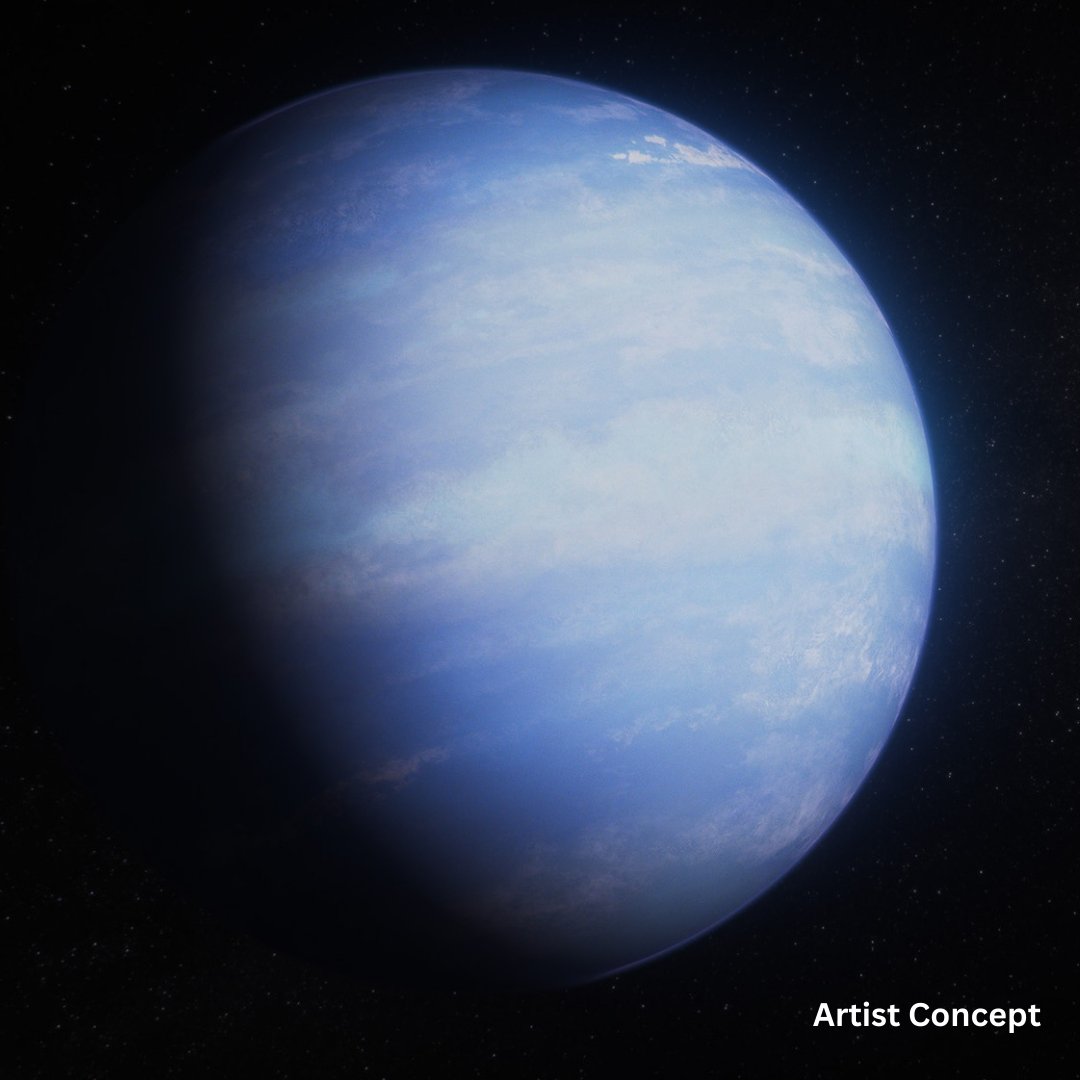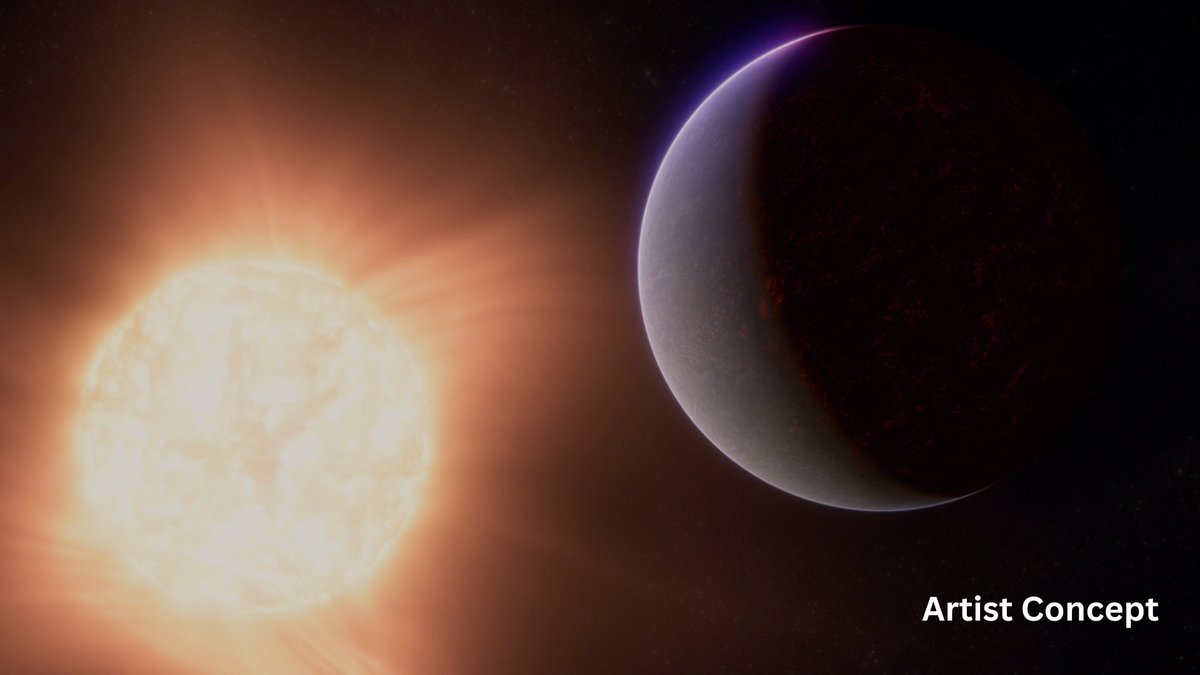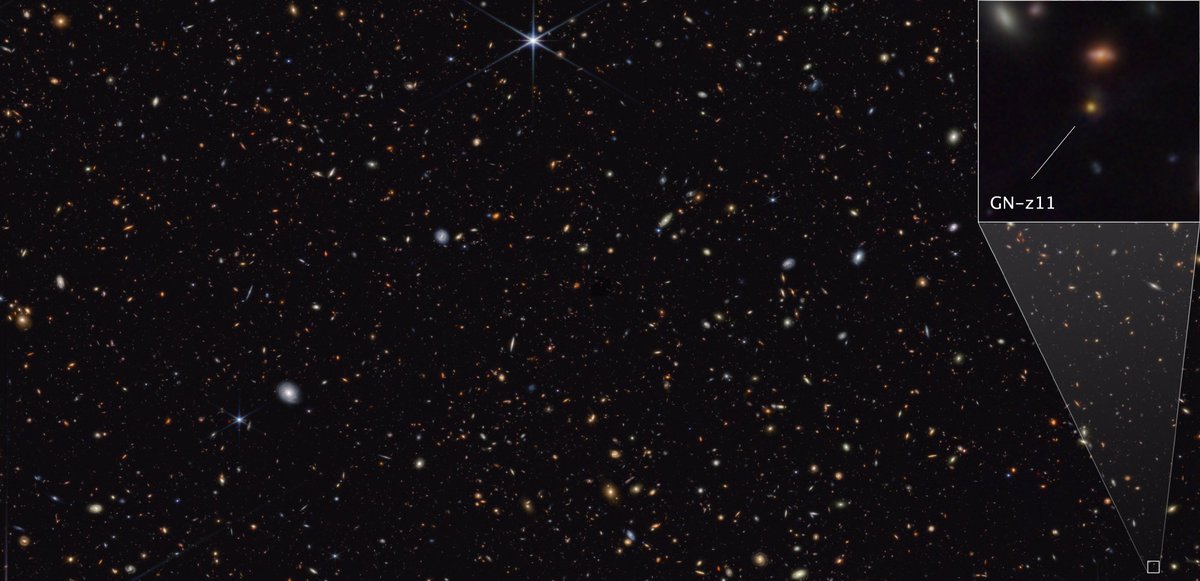👀 Sneak a peek at the deepest & sharpest infrared image of the early universe ever taken — all in a day’s work for the Webb telescope. (Literally, capturing it took less than a day!) This is Webb’s first image released as we begin to #UnfoldTheUniverse: nasa.gov/webbfirstimage… 

This isn’t the farthest back we’ve observed. Non-infrared missions like COBE & WMAP saw the universe closer to the Big Bang (~380,000 years after), when there was only microwave background radiation, but no stars or galaxies. Webb sees a few 100 million years after the Big Bang. 

If you held a grain of sand up to the sky at arm’s length, that tiny speck is the size of Webb’s view in this image. Imagine — galaxies galore within a grain, including light from galaxies that traveled billions of years to us!
The James Webb Space Telescope is a collaboration between @NASA, @ESA & @CSA_ASC. The @SpaceTelescope Science Institute is the science & mission operations center for Webb.
Tune in tomorrow at 10:30 am ET (14:30 UTC) as we continue to #UnfoldTheUniverse! go.nasa.gov/3o0SbeJ
Tune in tomorrow at 10:30 am ET (14:30 UTC) as we continue to #UnfoldTheUniverse! go.nasa.gov/3o0SbeJ
@NASA @esa @csa_asc @SpaceTelescope Yesterday, we shared the first image from Webb: galaxy cluster SMACS 0723. See the same target, viewed by @NASAHubble in 2017. Webb was able to capture this image in less than one day, while similar deep field images from Hubble can take multiple weeks. 

@NASA @esa @csa_asc @SpaceTelescope @NASAHubble Compare Webb’s Mid-Infrared (L) & Near-Infrared (R) views. Lens flares? Nope, the spikes you see are when light from bright objects like stars is bent by the edges of the telescope. They’re less prominent in mid-infrared.
More on diffraction spikes: webbtelescope.org/contents/media…
More on diffraction spikes: webbtelescope.org/contents/media…

@NASA @esa @csa_asc @SpaceTelescope @NASAHubble Why do some of the galaxies in this image appear bent? The combined mass of this galaxy cluster acts as a “gravitational lens,” bending light rays from more distant galaxies behind it, magnifying them. The light from the farthest galaxy here traveled 13.1 billion years to us. 

• • •
Missing some Tweet in this thread? You can try to
force a refresh













